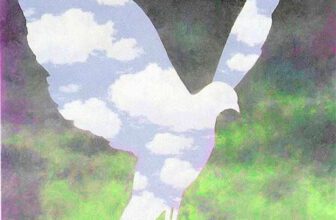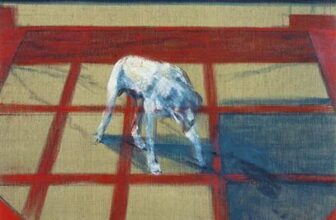
The Controversy of The Da Vinci Code: The Vatican Ban, Global Censorship
Themes, Public Reception, and Box Office Success
Dan Brown’s The Da Vinci Code is one of the most controversial and widely debated books in modern literature. Published in 2003, the novel quickly became a global sensation, topping bestseller lists and igniting discussions about religion, history, and art. However, its provocative themes led to significant backlash, particularly from religious institutions such as the Vatican. When the book was adapted into a film in 2006, the controversy only intensified. The Vatican took a strong stance against the movie, leading to bans in several countries. This article explores the controversy surrounding The Da Vinci Code, why the Vatican opposed it, the reasons for its bans in various nations, its central themes, and its public and box office reception.
The Controversy Surrounding The Da Vinci Code
The primary controversy surrounding The Da Vinci Code stems from its fictional narrative, which presents a reinterpretation of Christian history that many religious groups found offensive. The novel suggests that Jesus Christ was married to Mary Magdalene and that their bloodline has been secretly preserved over centuries by a clandestine organization called the Priory of Sion. Additionally, the book portrays the Catholic Church, particularly the Vatican and Opus Dei, as having actively covered up this supposed truth to maintain its authority.
For many believers, the novel was seen as an attack on the fundamental tenets of Christianity. Critics argued that despite being labeled as fiction, Brown’s extensive use of historical references and his claims of research-based accuracy misled readers into accepting the story’s alternative history as truth. This led to accusations that the book was blasphemous and historically inaccurate.
Why Did the Vatican Ban The Da Vinci Code?
The Vatican’s opposition to The Da Vinci Code was immediate and forceful. The Catholic Church viewed the book and subsequent film as dangerous distortions of Christian history. Several key reasons contributed to the Vatican’s condemnation:
- Portrayal of Jesus and Mary Magdalene – The suggestion that Jesus was married to Mary Magdalene and that they had a child directly contradicts Christian doctrine, which upholds the belief in Christ’s celibacy.
- Depiction of the Catholic Church – The novel suggests that the Vatican engaged in deception and conspiracy to hide historical truths. Such accusations were seen as an affront to the Church’s credibility and moral authority.
- Misrepresentation of Opus Dei – Brown’s portrayal of Opus Dei, a real Catholic institution, as a secretive and violent organization drew criticism. The book depicts Opus Dei as involved in murder and manipulation, which members of the group strongly denied.
- Impact on Christian Faith – Church leaders feared that The Da Vinci Code might lead believers to question their faith or accept historical inaccuracies as fact.
Due to these concerns, the Vatican urged Catholics to boycott the book and film. Some clergy members went further, calling for a formal ban. Vatican officials publicly denounced both the novel and the movie, and some reports suggested that the Church pressured certain countries to restrict its distribution.
Why Was The Da Vinci Code Banned in Some Countries?
Although the Vatican’s disapproval played a role in shaping global reactions, various nations had their own reasons for banning The Da Vinci Code. The film was officially banned in countries such as India, Pakistan, Egypt, Lebanon, and the Solomon Islands. The reasons for these bans varied:
- Religious Sensitivities – In predominantly Christian nations like the Philippines, religious groups lobbied for censorship due to the film’s depiction of Christian figures and themes. Some governments, including Fiji, deemed the movie “offensive to Christianity.”
- Blasphemy Laws – Countries with strict blasphemy laws, such as Pakistan and Jordan, prohibited the film to prevent religious unrest. Authorities feared that its content could incite violence or protests.
- Political and Social Stability – In places like Egypt and Lebanon, where Christian and Muslim communities coexist, authorities believed that the film could destabilize religious harmony.
- Pressure from Religious Leaders – India initially imposed restrictions due to demands from Christian groups, and only allowed the film’s release after making certain edits.
Despite these bans, underground copies of the book and film circulated widely, and many people found ways to access them through online sources.
What is the Main Point of The Da Vinci Code?
At its core, The Da Vinci Code is a thriller that weaves historical and religious mysteries into a fast-paced narrative. The novel follows symbologist Robert Langdon and cryptologist Sophie Neveu as they uncover a secret protected by the Priory of Sion. The story’s central thesis revolves around the following key ideas:
- The Sacred Feminine – One of the novel’s primary arguments is that Christianity suppressed the role of the sacred feminine, as represented by Mary Magdalene.
- A Secret Bloodline – The story posits that Jesus and Mary Magdalene had descendants, whose existence was concealed by the Church.
- Symbolism in Art – The novel explores hidden messages in Leonardo da Vinci’s works, particularly The Last Supper, as clues to the alleged historical cover-up.
- The Power of History and Knowledge – Brown’s narrative suggests that historical truths are often manipulated by those in power to maintain control.
While these themes captivated millions of readers, historians and religious scholars debunked many of Brown’s claims, pointing out factual inaccuracies and speculative interpretations.
Public Reception of The Da Vinci Code
Despite the controversy, The Da Vinci Code became one of the best-selling books of all time, selling over 80 million copies worldwide. Readers were drawn to its mix of history, mystery, and fast-paced storytelling. The novel inspired countless discussions, debates, and even guided tours exploring the real locations mentioned in the book, such as the Louvre Museum and Rosslyn Chapel.
However, literary critics were divided. While many praised Brown’s ability to craft an engaging thriller, others criticized the novel’s prose, historical distortions, and oversimplified character development. Nonetheless, the controversy only fueled its popularity, ensuring its place in literary history.
When the film adaptation directed by Ron Howard and starring Tom Hanks was released in 2006, anticipation was high. The movie was met with a mix of enthusiasm and outrage, as religious groups called for boycotts while audiences flocked to theaters.
Box Office Success of The Da Vinci Code
Despite protests and bans, The Da Vinci Code was a massive box office success. The film grossed over $760 million worldwide, making it one of the highest-grossing films of 2006. Its commercial success demonstrated that controversy often fuels public curiosity rather than deterring audiences.
Some key box office highlights include:
- Opening Weekend – The film opened at number one in multiple countries, earning approximately $77 million in its first weekend in the U.S.
- International Success – The film performed exceptionally well in Europe and Asia, where its blend of history and mystery captivated audiences.
- Sequel and Franchise – Due to its financial success, the movie led to two sequels: Angels & Demons (2009) and Inferno (2016), both based on other Robert Langdon novels by Dan Brown.
Although critics gave the film mixed reviews, audiences largely enjoyed it, and its financial performance cemented its status as a blockbuster hit.
The controversy surrounding The Da Vinci Code only heightened its appeal. The Vatican’s opposition, bans in multiple countries, and accusations of historical distortion created an atmosphere of intrigue that drew even more people to the book and film. Whether viewed as a groundbreaking thriller or an attack on religious beliefs, The Da Vinci Code undeniably left a lasting impact on popular culture. With its blend of history, mystery, and conspiracy, it remains a defining piece of modern fiction, sparking debates that continue to this day. image/worldhistory.org




